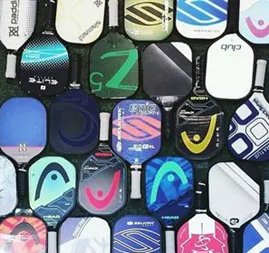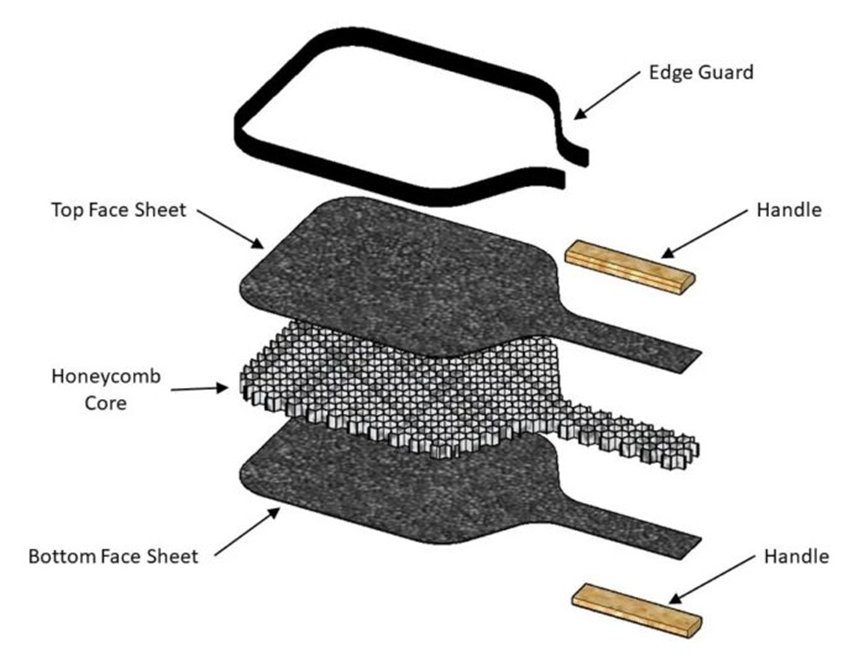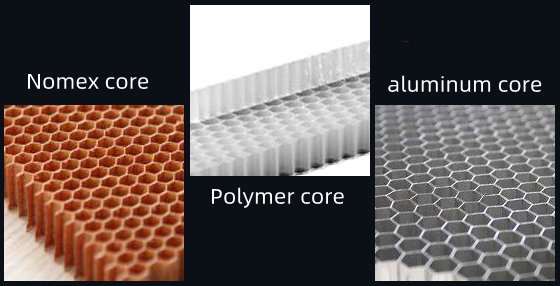Brief:
Pickleball is a new ball sport born in the 1960s. It has become popular in North America and is attracting more and more attention worldwide.
Pickleball combines the characteristics of tennis, badminton, table tennis and other sports. It is fun and easy to play, And the amount of activity is moderate and not easy to be injured.
It can be said to be suitable for all ages. Everyone can participate, whether they are an elder or a child. Pickleball is very easy to learn, but it needs time and effort to learn the skills, improve physical fitness and master appropriate strategies to be a good player.

Structurally, a pickleball racket mainly includes the following parts: racket body (core, surface, edge protective layer), handle, base rubber and hand rubber.
The birth of pickleball
1. Components of pickleball
Pickleball is a hard plastic ball slightly larger than a tennis ball and usually in colors such as yellow or orange. There are 26 to 40 circular holes with a diameter of about 1 cm on the surface of the ball (there are differences between indoor and outdoor balls. The indoor ball is softer and lighter, with 26 holes in bigger hole diameter, and a slower flying speed). The ball doesn't spin too violently, while not being too elastic, making it relatively slow when travelling through the air.

A pickleball racket is like a large table tennis racket without rubber. The total length and width cannot exceed 24 inches (60.96 cm), of which the length cannot exceed 17 inches (43.18 cm). Usually, the length of the racket is 15.5 ~ 17 inches (39.37 ~ 43.18 cm), the handle is 4 ~ 5.5 inches (10.16 ~ 13.97 cm) long, and the width is 7 ~ 8.25 inches (17.78 ~ 20.96 cm). Initially, rackets were mostly made of wood, but later they were also made of new materials such as fibreglass and carbon fibre. The racket is not very elastic and the surface is relatively smooth.

2. Structural of Pickleball racket

Structurally, a pickleball racket mainly includes the following parts: racket body (core, surface, edge protective layer), handle, base rubber and hand rubber.
l Core: The core of the racket plays a key role in the stability of the racket. The body material of modern rackets is usually a honeycomb structure, including Polymer (soft elastic) and Nomex (rigid nylon, somewhat hard). In the early days, there were also materials such as wood or aluminium alloy.
l Surface: The surface of the racket affects the force and friction of the racket. Surface materials include glass fiber (soft, sweet spot is smaller), graphite fiber, carbon fiber (hard, sweet spot is larger, a common model is Toray T700), etc. At present, professional rackets mostly use carbon fiber surfaces.
l Edge protection layer: The edges will affect the sweet spot of the racket. Usually made of hard plastic material.
l Handle: The handle is very important for the control of the racket. It usually consists of an extension of the core of the racket body and is wrapped with foam or rubber materials that play a buffering role. There is usually a bottom cover with the brand logo on the bottom of the handle.
l Base glue and hand glue: Base glue and hand glue will directly affect the hand feel. Choosing the right-hand gel can better maximize the performance of your racket. Hand glue is usually made of synthetic materials such as polyurethane or synthetic fibers.
3. Choice of Core material

l Polymer honeycomb core: This kind of material has good Resilience and durability and is suitable for players of all levels. It can offer wonderful control strength and balance strength, which is the common core material on the market.
l Aluminum honeycomb core: Aluminum honeycomb core is relatively light, but is more hard than polymer. This core material can offer more powerful strength, Comparatively
May sacrifice some control strength.
l Nomex honeycomb core: this kind of core material is relatively hard. Suitable for the player who likes to play aggressively. Nomex honeycomb core provides more power, but correspondingly less control.

